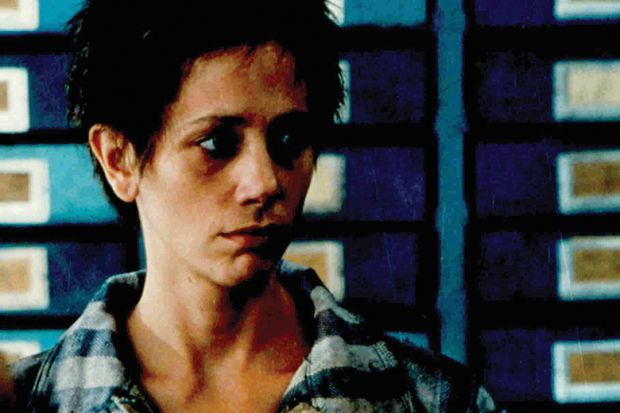This is not a scholarly monograph in the conventional sense. As its subtitle suggests, Holocaust Cinema Complete is a pedagogical guide for classroom use, for students and scholars alike, to navigate through the vast compendium of the 400 or so narrative films about the Holocaust. By “narrative Holocaust films”, Brownstein means not just feature films but also home video, non-episodic, made-for-television and streaming content. (It does not include series, documentaries or survivor testimonies.) He has set himself a mammoth task.
Brownstein defines a Holocaust film by two key features: Jews who suffered at the hands of the Germans (or German proxies) during the Second World War; or those who either helped or hurt Jews during the Holocaust. And he is strict in the limits he has set himself, refusing to class films such as Mel Brooks’ The Producers (1967), Ernst Lubitsch’s To Be Or Not To Be (1942) or Robert Wise’s The Sound of Music (1965) as Holocaust films simply because Nazis are portrayed in them. Nor are Mar Targarona’s The Photographer of Mauthausen (2018) and Andrzej Wajda’s Katyń (2007) included, because they lack Jewish characters and content. Alan J. Pakula’s Sophie’s Choice (1982) is trickier because, while its central character is not Jewish, the film does depict Jewish suffering.
The text, as befits the modern movie mindset, is full of lists and rankings. For example, Brownstein has a chapter titled “The 52 Best Holocaust Films”. But although the book is full of tables, statistics, subheadings and appendices, it is not a dry tome. Rather, it is written with wit and humour. This is actually a shame, because the reader has to sift through all the tables of data to get to the prose.
To give a flavour of how Brownstein approaches the topic, he has a chapter called “The Unavoidables”, subtitled “Elie Wiesel, Anne Frank, Oskar Schindler and Oscar Bait”. Here he considers the question: why does the Academy nominate and reward so many Holocaust films with awards? He doesn’t strictly answer it, but surely it has to do with virtue signalling. In the course of not answering the question, however, Brownstein disputes some of the Academy’s choices, referring to Taika Waititi’s JoJo Rabbit (2019) as “twaddle”.
At the other end of the scale, he considers The Grey Zone (2001) the greatest Holocaust film ever made. (It is no surprise that its director, Tim Blake Nelson, has endorsed the book.) Brownstein, then, provides 14 of the other very best Holocaust films (three under each of his genres, “victim”, “survivor”, “Gentile”, “perpetrator” and “tangential”). He also helpfully provides a list of films for a “full-semester Holocaust film class schedule”, although this is then unhelpfully mapped on to the US semester system of 15 weeks (please give a thought to your international colleagues!).
Disappointingly, though, given the vast amount of writing on this topic, the bibliography is on the thin side and there is nothing on how the Holocaust has touched a range of films that are not about the Holocaust (for example, James Cameron’s The Terminator (1984)). I get that this is not part of Brownstein’s definition, but it certainly would have been intriguing to read his thoughts on Holocaust creep in Hollywood.
Nathan Abrams is professor of film studies at Bangor University. He is the author of Stanley Kubrick: New York Jewish Intellectual (2018) and Eyes Wide Shut: Stanley Kubrick and the Making of His Final Film (with Robert Kolker, 2019).
Holocaust Cinema Complete: A History and Analysis of 400 Films, with a Teaching Guide
By Rich Brownstein
McFarland, 480pp, £52.50
ISBN 9781476684161
Published 30 July 2021
